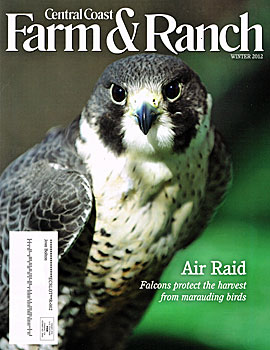
Should home gardeners still plant broccoli, cauliflower, cabbage and other brassicas this winter?
The answer is “yes,” provided you’re willing to take on a series of steps to help prevent the destructive Bagrada bugs from showing up, or to beat them back if they do.
Surendra Dara, strawberry and vegetable crops advisor and affiliated IPM advisor for UC Cooperative Extension for Santa Barbara and San Luis Obispo counties, and entomologist Brian Cabrera, Santa Barbara County Agricultural Commissioner’s Office, offer the following advice.
Start by buying pest-free transplants or sowing seeds in flats or shallow containers. Until they’re at least 8 to 9 inches tall, grow the plants in a protected location, such as a sealed greenhouse or beneath row covers tucked into the soil, as Bagrada bugs are more likely to overwhelm younger plants bearing more tender leaves and stems.
Bagrada bugs drop into crevices in the soil when temperatures cool, and to lay their eggs. Before transplanting your edibles into the garden, till the heck out of the soil to wreak havoc on any bugs or eggs that may be lingering there.
Or solarize the soil by covering it with clear plastic for a week or more. Heat generated beneath the plastic should kill the bugs and eggs.
Beef up your soil’s fertility prior to planting, as healthier plants are better equipped to cope with damage.
If you’re satisfied that your soil is bug-free, grow your crops beneath row covers for the entire season. Use hoops to keep the covers a few inches above the plants to prevent the bugs from piercing the leaves through the fabric.
Absent row covers, if Bagrada bugs descend, hand-pick or vacuum them. They seem to have a built-in defense to slide off the plants when the leaves are jostled, so lay down newspapers first to catch them. Dump the bugs into a bucket of soapy water, then pour them down a drain or strain out their carcasses and toss them in the trash.
If the bugs already abound, grow a trapping crop of their favorite hosts, alyssum and wild mustard. While risky, the theory is that the bugs will feast on the traps, not your edibles.
Spray Bagradas in the nymph stage, when they look like ladybugs, with Azadirachtin. The organic, neem-based product is a growth regulator that disrupts their molting, so they don’t mature.
Or spray Mycotrol-O at any point in the bugs’ life. The organic bio-pesticide is a fungus that penetrates their bodies, multiplies, then emerges through the membranes, killing them in the process.
≈
This article was first published in the Winter 2012 issue of Central Coast Farm & Ranch.
Copyright, Joan S. Bolton. All rights reserved. Reproduction of text or photos in any form is prohibited without written permission.
≈
